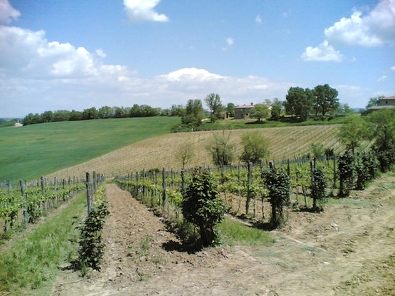August in Italy can be a cruel month. Well, not if you’re a job-for-life employee who gets six weeks paid vacation for whom the eighth month of the year can be quite pleasant.
For freelancers, it can be hellish. From about the second half of July to September 1, trying to work or get paid requires the same kind of skill plus dumb luck as winning at the card game sette e mezzo.
One is wise to take time off then, but since a good chunk of the inhabitants of the peninsula are crisping flesh at the country’s resorts, prices can be prohibitive.
The nice thing about Italy, though, is the large number of people with vacation homes who open their doors. Often they are splendid doors, proper old villa doors, doors that open on to terraces, pools or your own private-room-with-bath-and-a-view doors.
They can also, however, be doors that open because pseudo-somnambulist husbands wander in or where those precious few bambini Italians have today are determined to enforce their reputation as the most unruly in the EU.
Following one disastrous outing at a clapboard dump in the hills near Florence where stray cat hairs were the inevitable condiment to every pasta dish, I vowed to get it right.
Turning to “The Cosmo Girl’s Guide to The New Etiquette” (1971) — whose chapter entitled “Scorn Not the Street Compliment” had made early days in Italy much easier — I decided to update, if only slightly, the guidelines on couch surfing.
Here are the questions every girl should ask before packing a beauty case:
1. Will I put someone out of a bedroom?
This to determine whether you’ll be stuck on a couch. What Cosmo said back then still holds true: “At the risk of sounding bourgeosis…insist on a clean, comfortable bed in a bedroom…” Testify, sister.
2. Does it get cold at night…should I bring warm clothes?
Suss out whether the beach house is clammy or that 14th-century palazzo with huge stone walls has central heating. Key.
3. Who else will be there?
After spending one country weekend with great uncle Adolfo and aunt Clementina (great conversationalists but they retired at 9 pm, imposing a de facto curfew), it’s better to know in advance.
4. Is there someone who might give me a ride?
Trains are often the best way to get around Italy, especially with summer traffic. If no one is willing to pick you up from the station — often the affable, barbecue-skilled, non-sleazy husbands volunteer — and you must rely on regional bus systems, you are in trouble.
5. Is there cell phone reception? Internet?
This is a new entry. It’s important to know if you’ll be cut off from civilization or not. Prepare ahead if there’s no reception: print train schedules, any info on attractions/distractions nearby and buy a phone card in case the need for an emergency airlift arises.
And, finally, for all the questions you can’t politely ask, think ahead. I have been placed in perfectly nice rooms without curtains (sleep mask) or with construction work going on in the house or nearby (ear plugs) or clouded by mosquitoes (plug-in machine, plus repellent, plus post-bite lotion). Naturally, one can’t prepare for everything, but with a little thinking, buone vacanze are likely.



